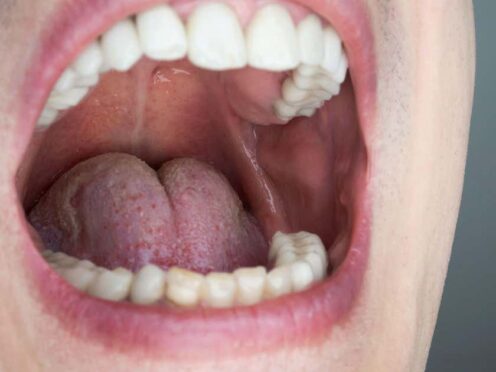
Scientists are developing “flavoured lollipops” that may be able to determine whether someone has mouth cancer without using painful and invasive methods.
At present, diagnosing mouth cancer can involve putting a flexible camera on the end of a tube through the nose or mouth and taking a biopsy for testing.
This procedure is invasive, and can be painful and time-consuming, requiring the specialist skills of an endoscopist.
Researchers say that their lollipop could be a quicker and kinder alternative that could be used in primary care setting, like GP surgeries.
The lollipop is made using a material known as smart hydrogel, which was developed by scientists at the University of Birmingham.
The idea is that patients suck on the lollipop, transferring a saliva sample into the hydrogel.
The researchers said that the hydrogel acts like a fishing net by “catching” proteins – along with salvia – that could be biomarkers of cancer.
The “net” can later be cut open in the lab to release the proteins for analysis, they added.
Dr Ruchi Gupta, associate professor of biosensors at the University of Birmingham, said: “Smart hydrogels have really exciting potential for diagnosing mouth cancer.
“They can be easily moulded into shapes as a solid to ‘catch’ proteins in saliva. We’re really excited to start the next phase of this project.
“We’re hoping that we can be the first to make a device which is much kinder for diagnosing mouth cancer for patients and easier for GPs to use.”
The project has received £350,000 in funding from Cancer Research UK and the Engineering and Physical Sciences Research Council.
Dr Gupta said the team are currently looking at focus groups to determine flavours for the lollipops.
Dr Iain Foulkes, executive director of research and innovation at Cancer Research UK, said: “Biopsies and nasoendoscopy are the gold standard for diagnosing mouth cancer, but it requires great skill to carry out and can feel unpleasant for patients.
“We want an accurate, faster and kinder alternative test which can help us diagnose cases of mouth cancer sooner.
“This project is an exciting first step towards an entirely new way to identify mouth cancers earlier.
“Research like this is guiding us towards a future where people can live longer, better lives, free from the fear of cancer.”
Rachel Parsons, 52, from Coventry, needed a biopsy after being referred to Coventry University Hospital with a lump on her cheek in 2008.
The mum of five said she was unprepared for the procedure which turned out to be painful.
Mrs Parsons said: “I had no idea what a biopsy really was.
“I had the kind of injection you get at the dentists and, when it wore off, it was really sore because I’d needed stitches.”
Mrs Parsons ended up having a nine-and-a-half-hour operation to remove a cancerous tumour from her cheek and replace the skin with tissue and veins from her forearm.
She said: “The thought of putting a lollipop round your mouth instead of having a biopsy in the first instance is amazing.
“I wish something like that had existed when I was diagnosed.”

Enjoy the convenience of having The Sunday Post delivered as a digital ePaper straight to your smartphone, tablet or computer.
Subscribe for only £5.49 a month and enjoy all the benefits of the printed paper as a digital replica.
Subscribe